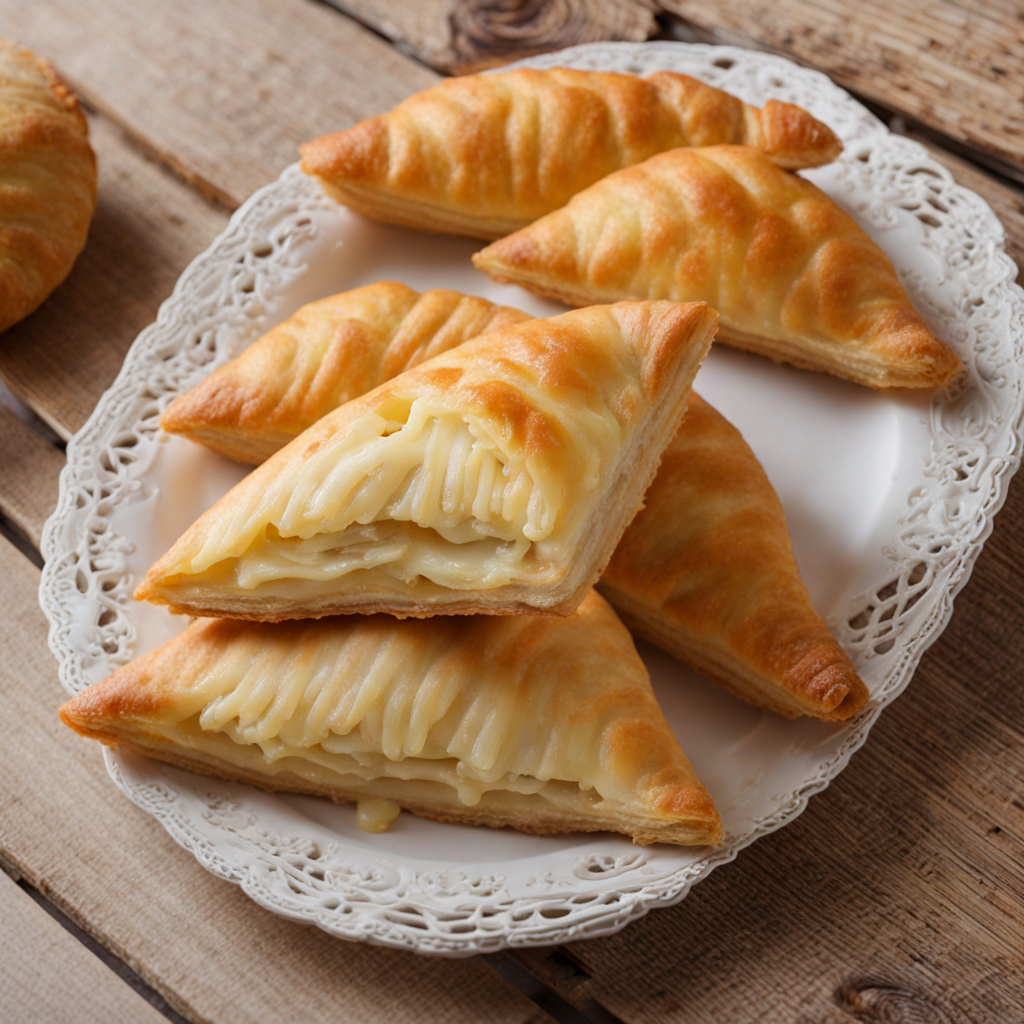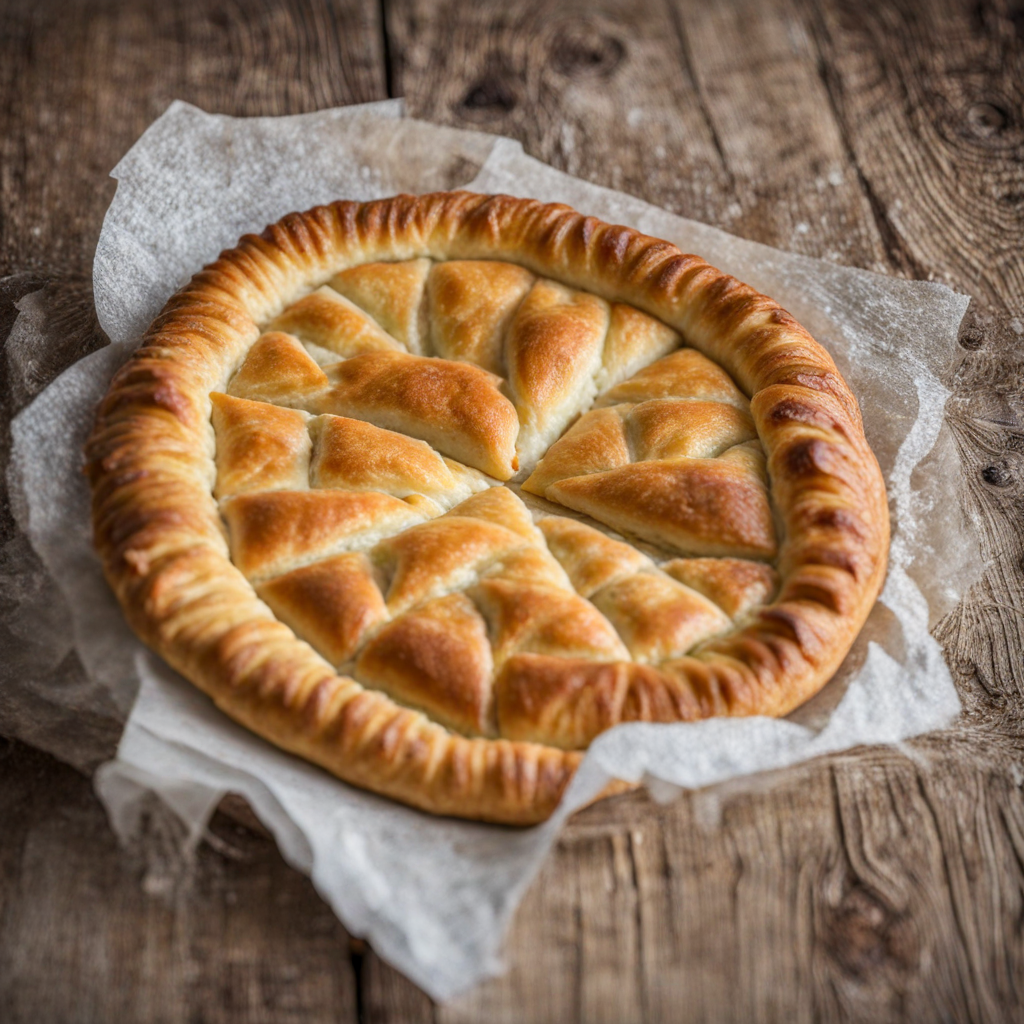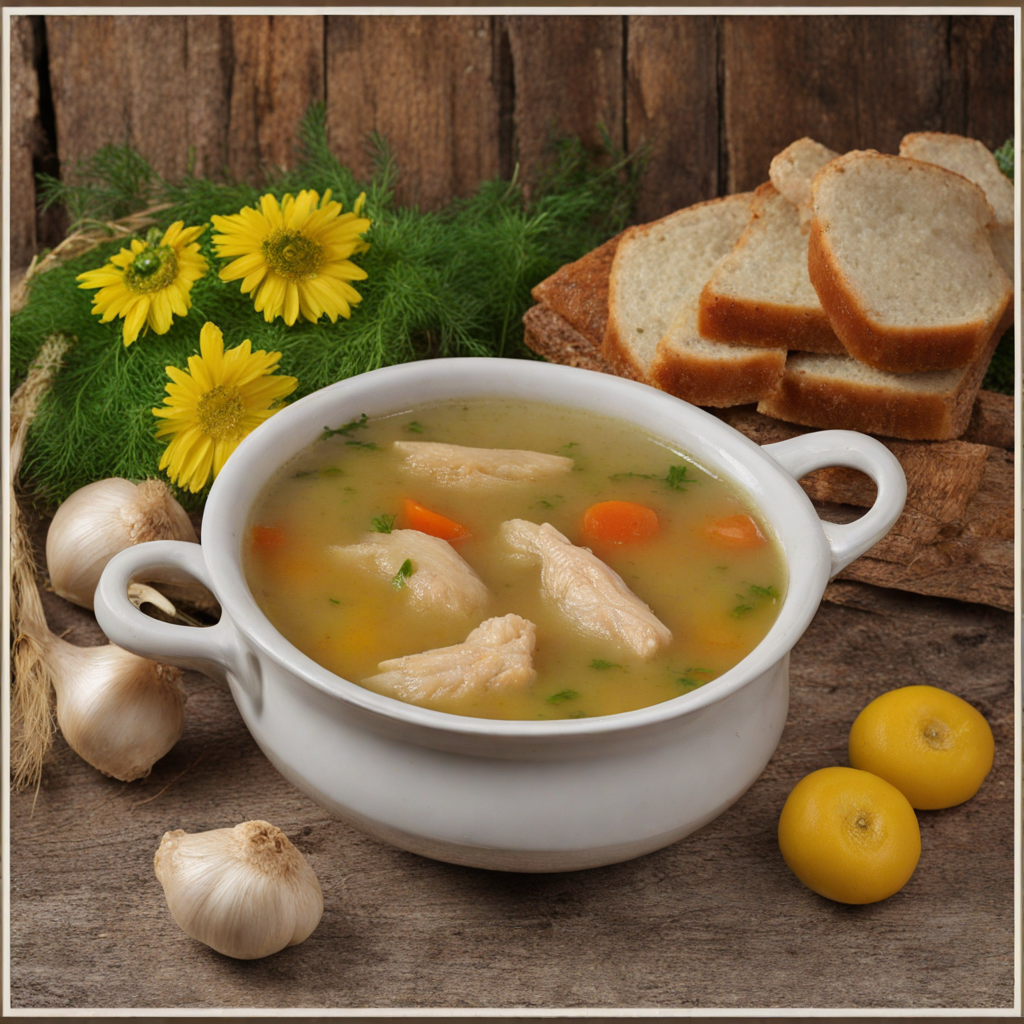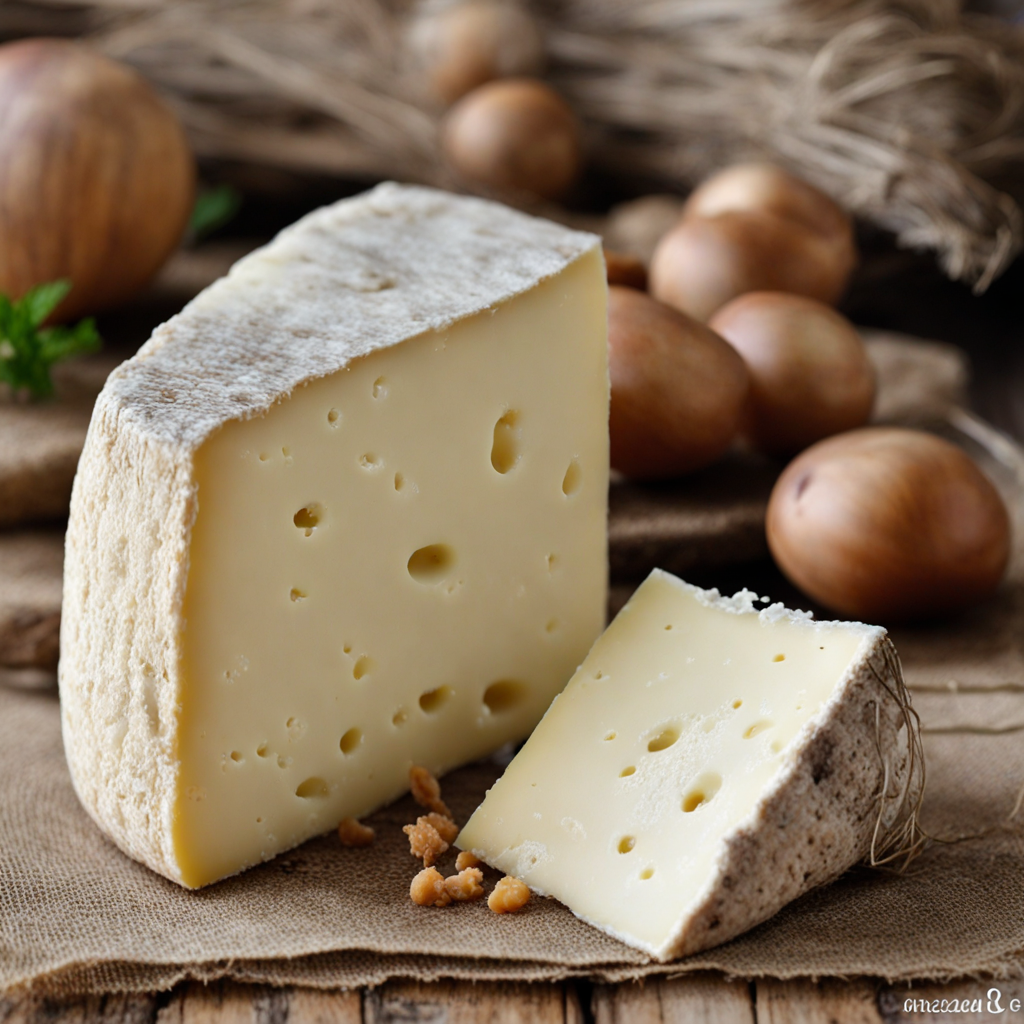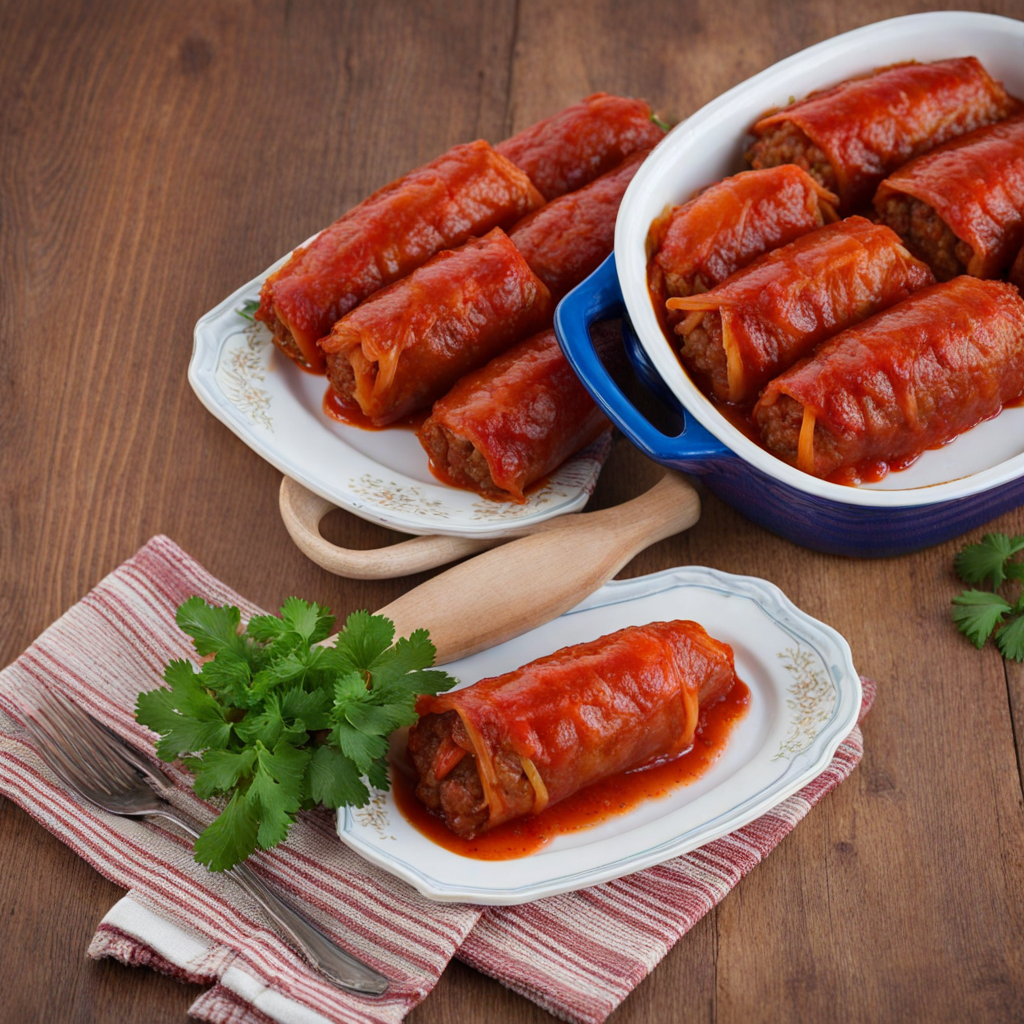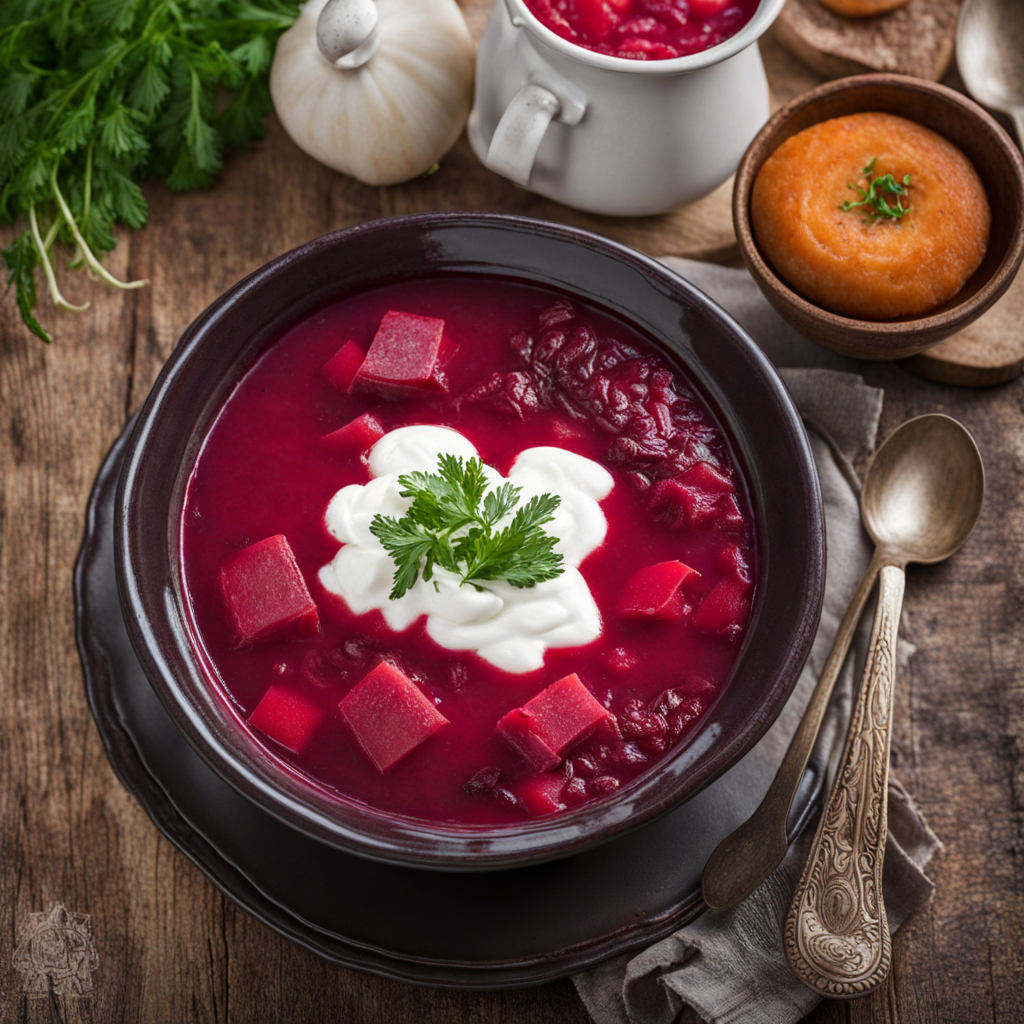Plăcintă
Plăcintă is a traditional Moldovan pastry that embodies the rich culinary heritage of this Eastern European nation. It is typically made from a flaky, thin dough that is skillfully rolled out and filled with a variety of delicious ingredients. The most common fillings include potatoes, cheese, pumpkin, or even sour cherries, allowing for both savory and sweet variations. The dough is often hand-stretched, resulting in a beautifully layered texture that is both crisp and tender when baked. The preparation of Plăcintă is often a communal activity, with families gathering to share recipes and techniques, making it not just a dish, but a cultural experience. Once baked, Plăcintă develops a golden-brown crust that encases the warm filling, creating an inviting aroma that fills the kitchen. The savory versions, such as those filled with cheese or potatoes, provide a satisfying, hearty meal that is often enjoyed with a dollop of sour cream or a sprinkle of herbs. On the other hand, sweet Plăcintă, especially those filled with seasonal fruits like cherries or apples, offer a delightful contrast with their natural sweetness and can be enjoyed as a dessert or a snack. Each bite is a celebration of flavors, showcasing the balance of the crispy exterior and the flavorful filling. Plăcintă is not just a dish but a symbol of Moldovan hospitality, often served at gatherings and special occasions. It reflects the agricultural traditions of the region, where fresh, local ingredients are celebrated. Whether you enjoy it hot from the oven or at room temperature, Plăcintă is a must-try for anyone looking to explore the diverse and delicious world of Moldovan cuisine. Its versatility, comforting flavors, and connection to the culture make it a delightful discovery for adventurous eaters.
How It Became This Dish
The History of Плацинта: A Culinary Treasure of Moldova Introduction to Плацинта Плацинта, or placinta, is a traditional pastry that holds a cherished place in the hearts and homes of Moldovan cuisine. This delightful dish, often described as a savory pie, is characterized by its thin, flaky crust filled with a variety of ingredients—most commonly cheese, potatoes, or pumpkin. Its rich history reflects the cultural tapestry of Moldova, influenced by various ethnicities, agricultural traditions, and social practices over the centuries. Origins of Плацинта The origins of placinta can be traced back to the region's ancient agricultural practices. Moldova, known for its fertile soil, has long been a land of abundance, where grains, dairy, and vegetables thrive. The earliest forms of placinta are thought to have emerged around the time of the Dacians, the ancient inhabitants of the region, who cultivated grains and practiced pastoralism. These early communities likely utilized simple dough made from wheat or corn to encase whatever fillings were available, setting the stage for what would become a beloved staple. As Moldova came under the influence of various empires and cultures—such as the Ottoman Empire, the Austro-Hungarian Empire, and later the Russian Empire—culinary exchanges flourished. Each of these cultures contributed to the evolution of placinta, infusing it with new ingredients and techniques. The Ottomans, in particular, were known for their pastries and pies, and their culinary practices significantly influenced Moldovan cooking. Cultural Significance Placinta is more than just food; it embodies the spirit of Moldovan hospitality and community. Traditionally, it is served during family gatherings, celebrations, and holidays, symbolizing unity and togetherness. In rural areas, it is common for families to come together to prepare placinta, a practice that fosters bonds and preserves culinary traditions. The dish is also featured prominently in Moldovan folklore and rituals. For instance, during weddings and christenings, placinta is often prepared as a symbol of prosperity and fertility. Its presence at these significant life events reinforces its role in the cultural identity of the Moldovan people. Additionally, placinta's versatility allows for seasonal variations, reflecting the agricultural calendar. In spring, it may be filled with fresh herbs and greens, while in autumn, pumpkin or apple fillings become the stars. This adaptability not only showcases Moldova's rich agricultural heritage but also emphasizes the connection between food and the changing seasons. Development Over Time As Moldova navigated its complex history—marked by wars, migrations, and shifts in governance—the preparation and consumption of placinta evolved significantly. In the 19th century, with the rise of nationalism and a renewed interest in folk traditions, placinta solidified its status as a national dish. Cooks began to take greater pride in their recipes, leading to the creation of regional variations. In urban areas, the introduction of industrialization altered the way placinta was made. Bakeries began to produce placinta on a larger scale, making it more accessible to the masses. This commercialization contributed to a shift in the perception of placinta, from a homemade delicacy to a popular street food. Vendors selling placinta in bustling markets quickly became a common sight, and the dish gained popularity beyond its rural roots. The 20th century brought further changes, especially during the Soviet era when Moldova was part of the USSR. While traditional recipes were often simplified to meet the demands of mass production, the importance of placinta as a cultural symbol remained intact. It became a comfort food for many Moldovans, evoking nostalgia for home and family gatherings. In recent decades, following Moldova's independence in 1991, there has been a resurgence of interest in traditional foods, including placinta. Chefs and home cooks alike have sought to revive authentic recipes, incorporating local ingredients and artisanal techniques. This movement has been bolstered by the growing popularity of food tourism, with travelers eager to experience the authentic flavors of Moldova. Modern Interpretations and Global Influence Today, placinta is experiencing a renaissance, blending tradition with modern culinary trends. Chefs are experimenting with new fillings and presentation styles, introducing innovative flavors while honoring the classic recipe. For instance, fusion variants may incorporate international ingredients, reflecting the globalized world we live in. This evolution has led to placinta being served in upscale restaurants alongside traditional dishes, showcasing its versatility and enduring appeal. Moreover, the diaspora of Moldovan communities around the world has contributed to the global spread of placinta. Moldovans living abroad often share their culinary heritage with new communities, leading to the introduction of placinta in various cultural contexts. As a result, placinta is not only a symbol of Moldovan identity but also a bridge connecting diverse cultures through food. Conclusion In summary, placinta is much more than a dish; it is a narrative woven into the fabric of Moldovan history and culture. From its ancient origins to its contemporary interpretations, placinta serves as a reminder of the land's rich agricultural heritage and the enduring importance of family and community. As it continues to evolve, placinta remains a beloved symbol of Moldovan identity, embodying the flavors, traditions, and stories of a nation that prides itself on its culinary legacy. Whether enjoyed at a festive gathering, a cozy family meal, or a bustling street market, placinta invites everyone to savor a bite of Moldova's past, present, and future.
You may like
Discover local flavors from Moldova


